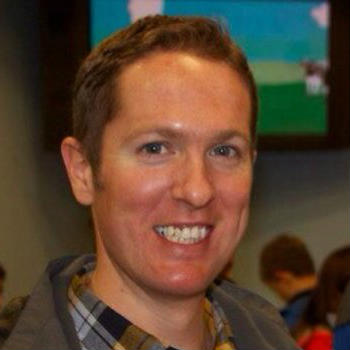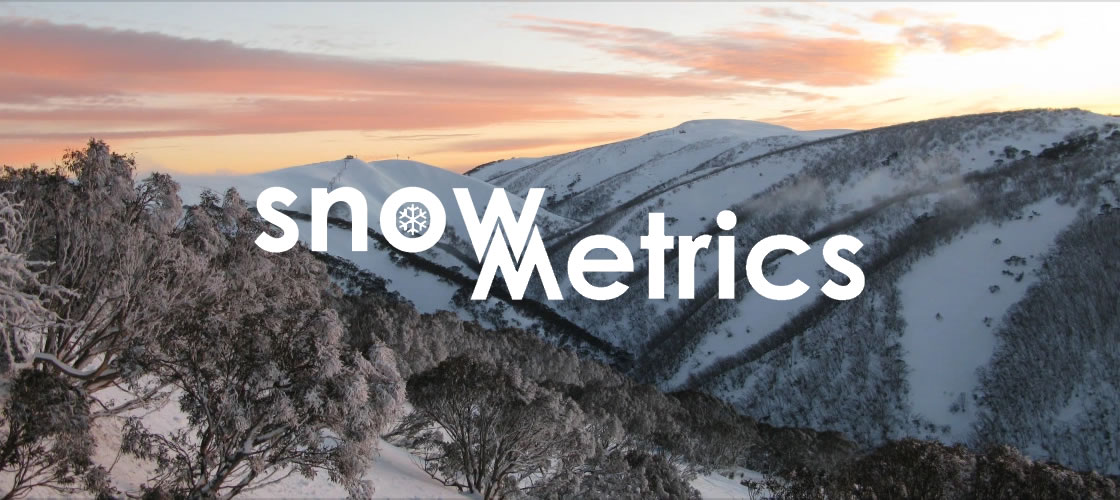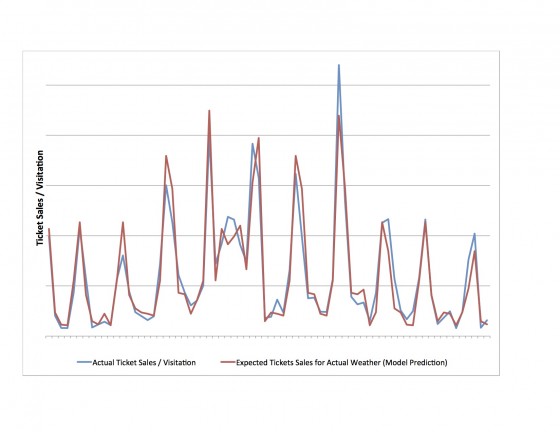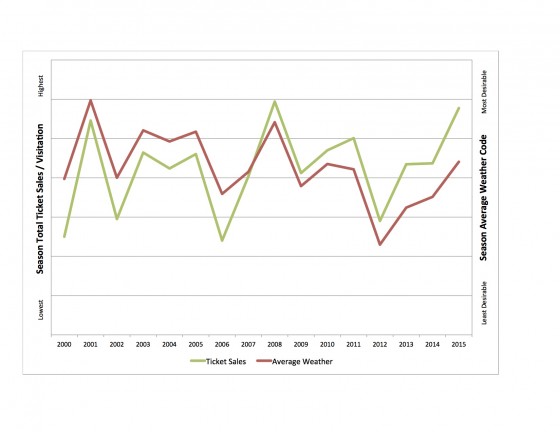
Andrew Snow
Inside MRG’s conditions-based performance model.
One of the most innovative performance models isn't being use at Vail or POWDR, or Whistler, but Mad River Glen. When one of the brains behind this operation, Andrew Snow, recently began offering his services to other ski areas, I reached out.


BLANCHARD
Gregg: Let’s start with your story, Andrew. Where are you from, what was your first ski resort gig, how did you land that, and where have you worked/what have you done since then?
Andrew: I grew up in southern NY and started skiing when I was about 7 years old. Taking the train to Manhattan every day for high school was great, but I was always happiest when I was in the mountains. College gave me the chance to be closer to skiing and I moved to Vermont to study economics and Italian at Middlebury College.
An internship at Mad River Glen during my senior year turned into my first industry gig as the Minister of Propaganda (or marketing coordinator) there. Over the past 15 years, I’ve also worked in ticketing, budgeting, rentals, retail, lift ops, finance, and more at Killington and Bolton Valley, and I also spent 7 great “summers” in lifts and mountain ops at Mount Hotham in Australia. Those back-to-back winters kicked off a streak of skiing every month, which is currently 143 months strong.
I currently live in Richmond, Vermont, less than an hour drive from 6 different ski areas, and I recently started my own independent consulting company, Snowmetrics Consulting.
Gregg: At MRG, you worked on something that I first read about a few years ago and that’s a weather/conditions based performance model. That’s the meat of what I want to discuss so take some time to talk about what that is, how it works, and why it works.
Andrew: MRG’s ticket model is basically a database of ticket sales statistics that we use to both forecast revenue and measure performance. What’s cool about this model is that it takes into account the varied impact of the weather.
Essentially every single day gets coded based on its weather and snow conditions. Not surprisingly, those weather codes correlate very strongly to ticket sales. With the ticket and weather data from the model, we use weighted averages to create the annual revenue budget. Throughout the season, the model also gives us a great way to measure business performance. It’s easy to say business is good because the snow is good, or vice versa, but the model lets us actually measure how things are going given the actual conditions.

A ten week stretch during the 2014/15 ski season at MRG.
For each day, you can take the weather code and see what the model predicts, then compare that prediction to the actual ticket sales. This shows if business is performing better or worse than expected for the conditions. Season after season, I continue to be surprised by how closely the model predicts actual sales.
You can even take the model a step further and use it as a planning tool: looking at weather forecasts, managers can use the model to better anticipate what business levels will be a few days out, and can make sure they have the right level of staff. The main reason why the model works is because it’s not complicated, simplifying the weather into a numerical ranking and looking at its direct correlation to ticket sales.
Gregg: When we first talked on the phone you mentioned that rain has the biggest impact on this model. Without divulging your secret sauce, talk a little bit about not only how things are weighted, but how you find those weights.
Andrew: The rankings or weather codes are all about how desirable a day is for skiing and how likely people are to come buy tickets. Weather, temperature, snow conditions, and open terrain all factor in. You can think of the codes as a scale from least desirable to most desirable.
Rain days are probably the easiest since they’ll always get the lowest ranking. A powder day with at least a foot of snow and no wind-hold is the opposite end of the scale and will get the highest ranking. For everything in between, it’s a little subjective. Great snow conditions with 20-below-zero wind chills will rank lower than a day with fair snow conditions but sunshine and temps in the 30s, simply because more people would rather ski on the day with better weather.
It’s also important to look at the days in sequence: we know that a snowstorm on Thursday will translate to a busy Saturday. MRG’s general manager, Jamey Wimble, has been the person ranking every ski day for the past 20 years, so there’s good consistency in those rankings.
Gregg: One of the ironic things about this model is that in an industry of corporate skiing and bigger and bigger money, MRG was the innovator. Why do you think it was a ski area like Mad River that made this happen?
Andrew: MRG is a unique place that attracts a lot of passionate people who really care about seeing the ski area and the cooperative ownership succeed. Everyone from web designers to foresters and accountants to painters have volunteered their expertise, and the ticket model is one such example. Deri Meier, one of the founders of the co-op, a former UVM business professor, and a retired corporate executive, first developed it with his son two decades ago.
I think MRG was lucky to have someone with that kind of experience who looked at ticket sales both from an outside business perspective but also as a passionate skier. There are lots of talented business people skiing and snowboarding at every mountain across the country, but MRG’s co-op and its spirit of volunteerism are what made this ticket model happen.
Gregg: The reason I wanted to talk to you was, of course, you’re recent decision to turn this into a service you could offer other areas. Beyond just the numbers, what are ski areas really getting when they work with you? Is it smarter decisions? Is it a better understanding of actual performance? Something else?
Andrew: My goal is to offer ski areas all of those things. I love to dig into numbers and look for trends, identify what business segments are growing or declining, and figure out ways to be more successful. I believe that having good analysis and a strong understanding of a ski area’s business will lead to smarter, data-driven decisions. Using a model like Mad River’s can help ski areas better understand their business’s real performance regardless of the whims of the weather, better equipping them to maximize their success whether the snow cooperates or not.
As a consultant I hope to help ski areas of all sizes have the same level of business understanding as the bigger resorts, where they have staff dedicated to budgets, pricing, and analysis. With my varied background in the industry, I can look at the numbers with an understanding of the whole operation, not just skier visits or dollars and cents.
Gregg: If a ski area wanted to give this a go, what are they going to need both in terms of data but also operationally on a daily basis and the type of market they serve to really make this work?
Andrew: Operationally, all a ski area needs to do is track some statistics each day. Ticket data like number of tickets sold and daily ticket revenue are the most important. It’s helpful to know how many of those tickets are from groups or other sources that might not be as weather-driven. If a ski area tracks season pass visits, those could be included too, but it’s not necessary. And then you’d need some weather and operational data to rank the days.
Most of the important information will probably be on the snow report: new snow, temperatures, wind, weather conditions & precipitation, terrain open, lifts open, surface conditions, etc. Any other factors like wind hold, road closures, or special events should also be noted. It’s best to do the weather rankings each day as the season goes along, but looking at snow reports would help ranking older days. I would say 3-4 years of historic data would give me enough to start building a new model for another ski area.
I think this model in its current form works better for day trip areas than for big destination resorts. Day trippers are more likely to make their plans based on weather and conditions, while destination visitors might have planned and paid for their trip months earlier and will ski or snowboard regardless of the weather on a particular day. That’s not to say the model couldn’t be adapted for a destination resort; there would be other factors beyond weather and snow that I’m certain impact their visitation, and it would be interesting to dig into some numbers.
Gregg: Any final words about the model, your services, or this sport we all love?
Andrew: The ticket model has been a great tool for Mad River Glen and I think other ski areas could find it really useful too. I’m also available to help ski areas with a variety of other projects: analyzing ticket yield, building customized reports, budget planning, optimizing point-of-sale systems, tracking specials and promotions, creating databases, generating wage-forecasting schedule templates, providing operational advice, etc. – really anything involving numbers.
The ski industry is a tough business and I’ve unfortunately seen several small ski areas close down during my career in the industry. I hope to use my skills to help ski areas of all sizes succeed by giving them the financial tools, data, and analysis to make better strategic decisions. With weather becoming more variable and costs continuing to increase, understanding the numbers behind the business is only going to become more important.
Aside from enjoying the challenge of the industry and the analytical work that I do, my love of skiing is as strong as ever. As I wait for the weather to turn colder in Vermont, I’m dreaming about powder days in the woods and skiing slush bumps in the spring sun.
And yes, my last name really is Snow!
For more info visit Snowmetrics Consulting:
snowmetricsconsulting.com
About Gregg & SlopeFillers
I've had more first-time visitors lately, so adding a quick "about" section. I started SlopeFillers in 2010
with the simple goal of sharing great resort marketing strategies. Today I run marketing for resort ecommerce and CRM provider
Inntopia,
my home mountain is the lovely Nordic Valley,
and my favorite marketing campaign remains the Ski Utah TV show that sold me on skiing as a kid in the 90s.
Get the weekly digest.
New stories, ideas, and jobs delivered to your inbox every Friday morning.

